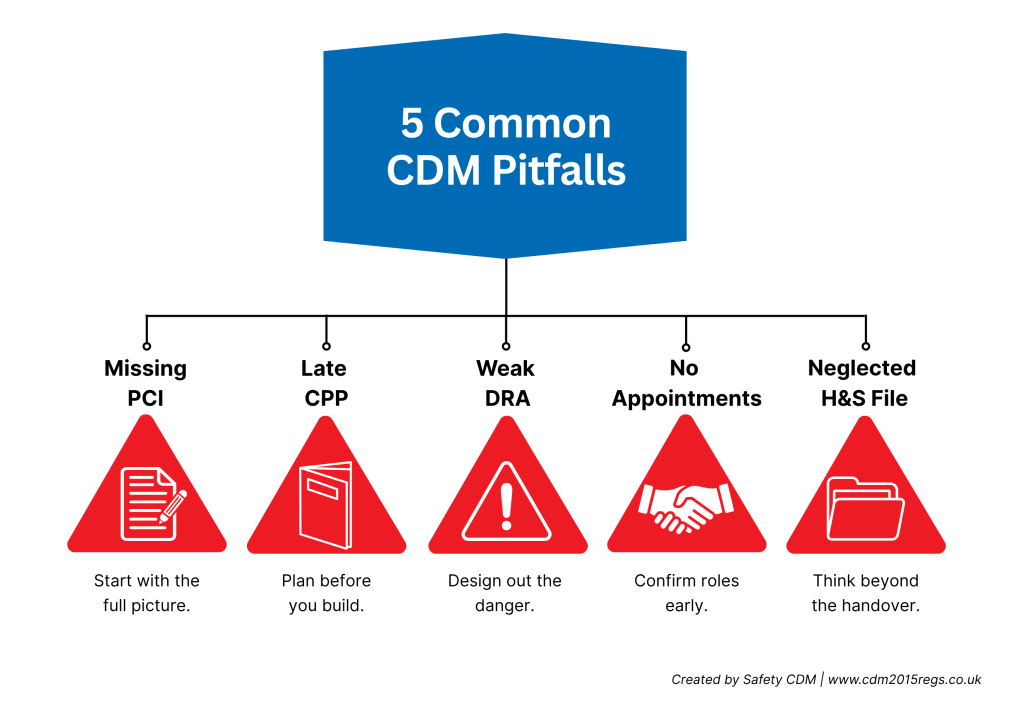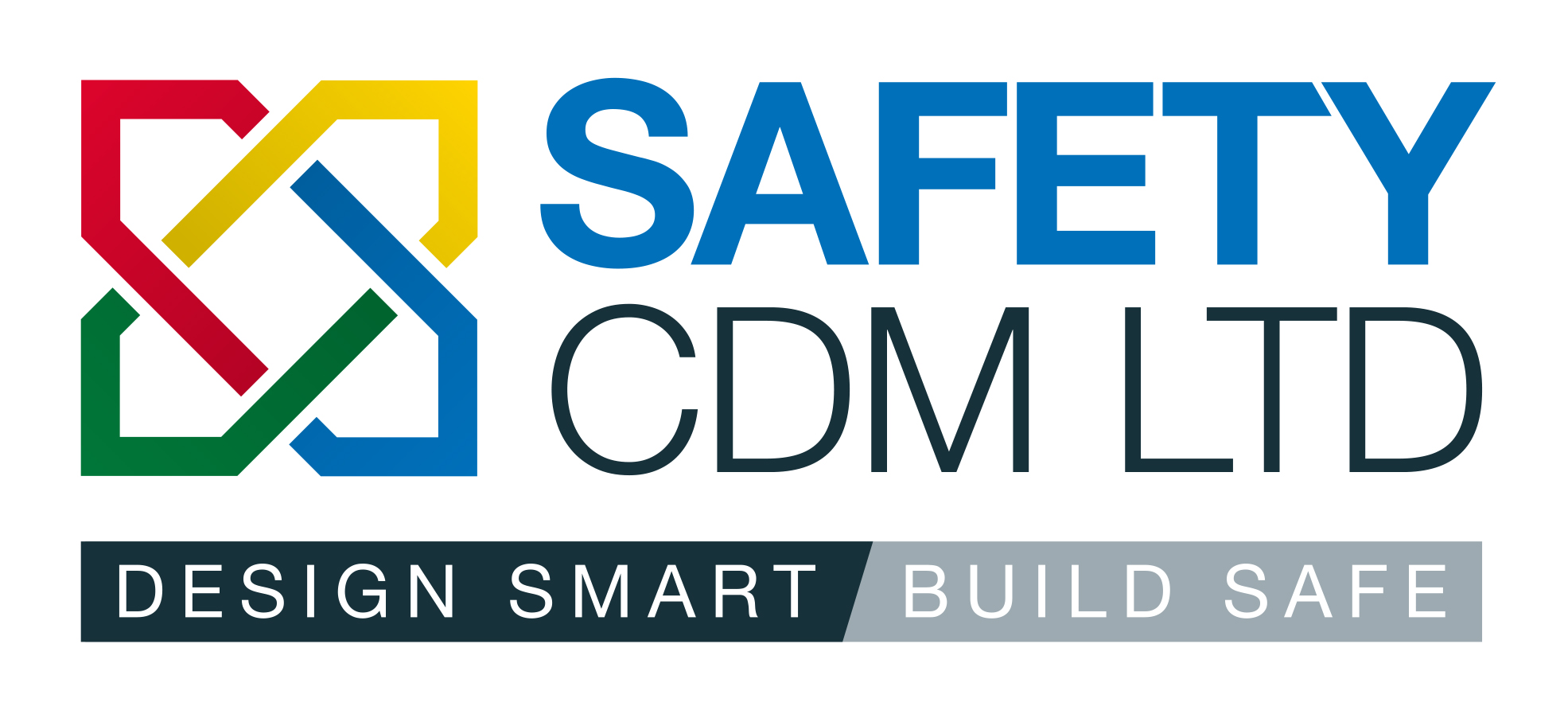Despite progress across the industry, the same CDM issues continue to appear on projects – putting compliance, safety, and delivery at risk. As we head into 2026, here’s a quick-fire review of the most frequent pitfalls we’re still seeing and how to avoid them.

1. Missing or Incomplete Pre-Construction Information (PCI)
Too often, projects begin without a full picture of existing hazards – from asbestos and underground services to unstable structures or access limitations.
Why it matters:
Poor PCI means poor planning. Missing or inaccurate information leads to design changes, late risk management, and increased potential for incidents on site.
How to Get it Right:
Start early. Collect and share all relevant surveys, records, and design details before anyone steps on site. Early collaboration between the client, designer, and Principal Designer is vital as it ensures risks are identified, responsibilities are clear, and design decisions are made with a proper understanding of the project’s context and constraints.
2. Late or Generic Construction Phase Plans (CPPs)
We still see CPPs arriving just before works start – or worse, copied from previous projects.
Why it matters:
A late or generic CPP means the Principal Contractor hasn’t properly planned site-specific risks. This can lead to non-compliance, confusion during mobilisation, and poor site coordination from day one.
How to Get it Right:
The CPP should be developed in tandem with the design and pre-start process; not as an afterthought. Involve supervisors, subcontractors, and designers in shaping it so it reflects real conditions, methods, and sequencing. Review it together before work begins to make sure it’s complete and practical.
3. Incomplete Design Risk Reviews
Some design teams still treat risk reviews as a formality, resulting in vague or generic notes that don’t help contractors manage hazards.
Why it matters:
Overlooked risks can cause major issues once construction starts, and lead to unsafe working practices or future maintenance difficulties.
How to Get it Right:
Integrate risk reviews into design development rather than leaving them until the end. Discuss risks openly in design meetings, record decisions clearly, and communicate them in a way that the contractor can use; a focused, honest review rather than a long, generic one.
4. No Formal Appointments or Late Duty Holder Confirmations
Projects still move forward without clear written appointments for the Principal Designer or Principal Contractor.
Why it matters:
This leaves clients legally exposed and creates confusion over who’s managing which duties. Without formal appointments, key tasks can fall through the cracks.
How to Get it Right:
Make formal appointments early, ideally as soon as design work starts. Confirm in writing who holds each duty and make sure they have the right skills, knowledge, and experience. Early appointments create accountability and allow proper planning time.
5. Neglecting the Health & Safety File
The Health & Safety File is often rushed at project closeout or left incomplete.
Why it matters:
The file isn’t just paperwork; it’s a legal requirement and a critical resource for safe maintenance, refurbishment, and demolition in the future. A poor-quality file creates long-term safety risks.
How to Get it Right:
Treat the file as a live document. Start it early, update it as the project progresses, and make sure it captures key design decisions, residual risks, and maintenance requirements. Regular updates from the Principal Contractor and Designer keep it accurate and useful at handover.
Building Safer in 2026
Many of these pitfalls are preventable through early engagement, clear communication, and consistent follow-up.
At Safety CDM, we support clients, designers, and contractors in closing these compliance gaps and ensuring projects stay safe, coordinated, and fully CDM-compliant from start to finish.
Get in touch today today to see how we can help…

✔ Construction Phase Plans
✔ Risk Assessments & Method Statements
✔ Pre-Construction Information
✔ Site Audits
✔ Health & Safety Files
✔ Construction Management Plans
✔ NEW Principal Designer
(BSA Regulations) Services Available
Read more...
-
How to Shut Down Your Construction Site Safely Over Christmas
December 8, 2025 Building -
Now Available: Principal Designer (BSA) Services for Low-Rise Projects
September 25, 2025 Building







